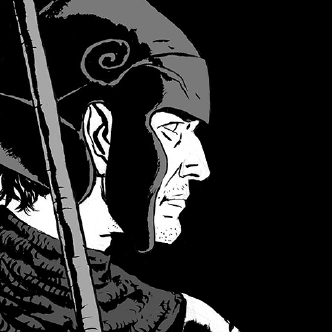Any Which Way You Caan, James (1940-2022)
- Jarek Kupść

- Jul 13, 2022
- 4 min read
Consider this: if James Caan didn’t do The Godfather, our discussion of his best work wouldn’t change an iota. He was right there, in the most mature years of Hollywood, firing on all cylinders. Even before reaching bankability, he made a threatening mark on pure class: Olivia de Havilland (Lady in a Cage, 1964) and Simone Signoret (Games, 1967). He was there for Altman’s first major outing, as a troubled astronaut in the imperfect Countdown (1968).

In Coppola’s tremendous The Rain People (1969), Caan found his groove for the first time. It was a difficult role, melding toughness with emotional fragility. He could explode anytime, and we sensed it. But if you watch George Lucas’ documentary, Filmmaker (1968), about the making of The Rain People, you will see a funny, relaxed and attentive Caan. Volatile likeability became his trademark, but it was, for the time being, just an act.
Caan took full advantage of the plethora of opportunities New Hollywood had to offer. He excelled as a dying football player in Brian’s Song (for TV, 1971) – proving he could make the audience cry without resorting to cheap sentimentality. The film remains one of the most touching depictions of male friendship, exclusively due to Caan’s heartfelt chemistry with Billy Dee Williams.

After the success of The Godfather, Caan took the volatile edge off with a charming crime comedy, Slither (1972) and proved he can romance a lady in Cinderella Liberty (1973). His relationship with Marsha Mason convinces as much as the affair with Billy Dee – again without undue melodrama. Caan was really, really good with partners – studying under Sanford Meisner helped a lot, no doubt. In the pioneering buddy cop comedy, Freebie and the Bean (1974), Caan goes ballistic with a neurotic partner, Alan Arkin, and, again, you feel the love between the two. Yet, the same year, a solitary Caan reached near Dostoyevskian proportions as an academic spiralling down the abyss of addiction in The Gambler.
The prophetic, anti-corporate Rollerball (1975) gave us Caan at his physical best. He did most of his stunts and his body did the bulk of the acting – but it was his face that betrayed the fragility of fame. Rollerball remains an unsurpassed proof that meaningful themes can be delivered with outlandishly dynamic action.

While The Killer Elite (1976) proved all action and no theme, it gave us Caan facing off ninjas, and confronting Robert Duval for the fourth time. It is great fun to watch, even if the actor dismissed the film as a “zero on a scale to ten”.
He spoofed his own tough guy persona in the non-verbal Silent Movie (1976), and his cameo was one of the most memorable in a film bursting with famous faces. It must have been a fun year for James, as, in my view, Harry and Walter Go to New York beats The Sting by a long shot. It didn’t do well upon release, but if you only gauge Caan’s career against Sonny Corleone, treat yourself to a soft-shoe and song duet Caan does with Elliott Gould.

In the star-studded A Bridge Too Far (1977), Caan has less than ten minutes of screen time, and comes in precisely at the film’s midpoint. When the dust settles over the three hours of this terrific WWII epic, what you remember most fondly is James Caan’s sergeant – his loyalty, dedication, and intense resolve. This cameo serves as a reminder of Caan’s screen presence in a decade of Redford, O’Neal, Hackman, Caine, Gould, and Connery, all of whom make a far less memorable impact in the same film.

I will finish off with Thief (1981), which, coincidentally, was the end of the best years of New Hollywood, and the end of James Caan’s primary reign as a leading man. The actor had just turned forty, and his face was showing signs of wear and tear. He doesn’t need to talk much in the film to make us believe in his character’s experience. Much has been said in praise of this fantastic film, which I still consider Michael Mann’s best. I just want to recall the long diner scene between Caan and Tuesday Weld. Conceived as counterbalance to the dialogue-free heist sequence, it lasts ten minutes – you couldn’t imagine it in today’s action-driven cinema. The scene gives the film its heart. The interaction is performed so flawlessly by both actors, by the end of it you feel like you’ve been there with them, at the diner, and witnessed a real couple solidifying their trust and love. On one occasion, I have called Tuesday Weld one of the most giving actors on the planet. But in that scene from Thief, I can see that statement working both ways. Weld has Caan to play against, and he gives her so much to work with in return. One of my favourite cinematic moments of all time: two actors just sitting, talking, and feeling. A rare instance of absolute truth in a medium of make-believe.

The fact is, James Caan could be truthful under all cinematic circumstances. On screen, whatever he did felt real because he was not predictable.



Comments